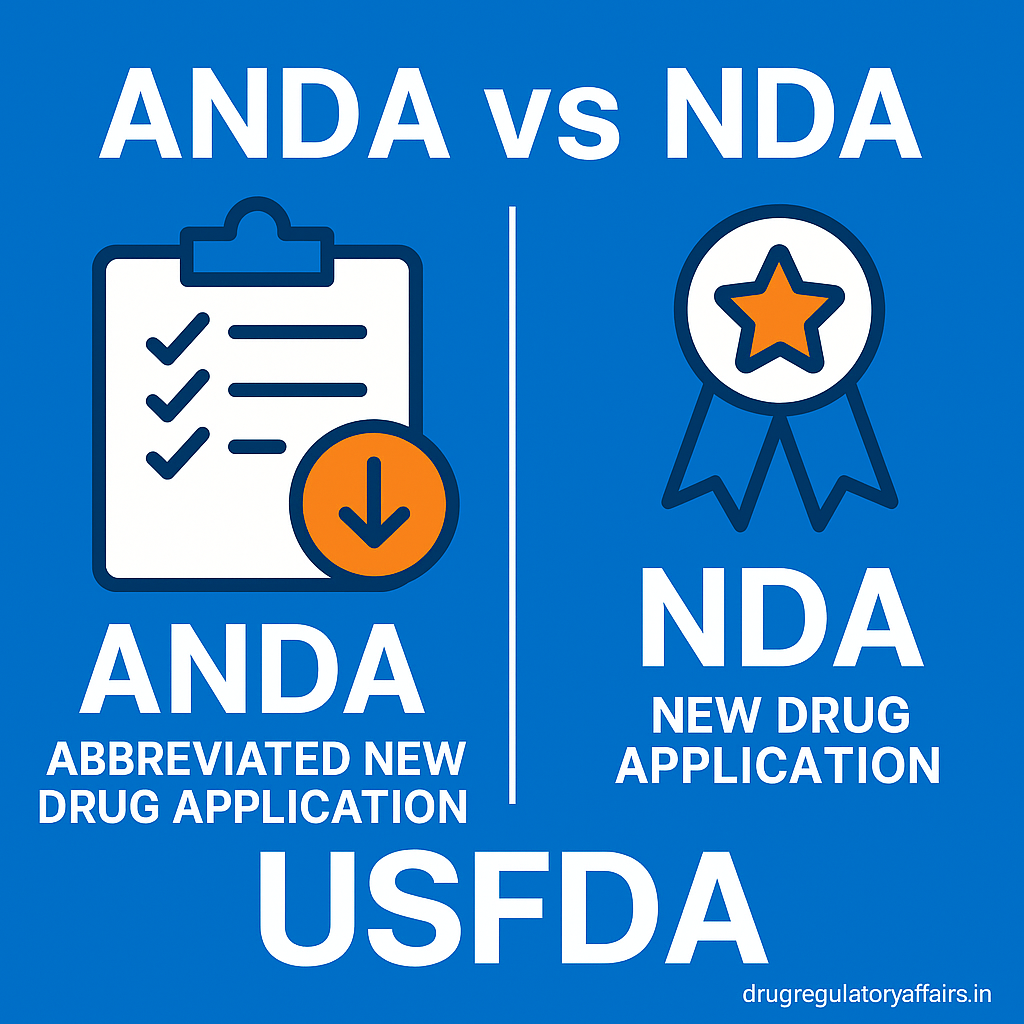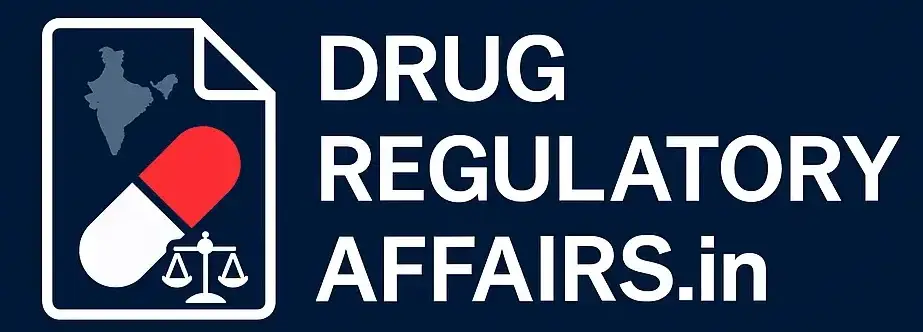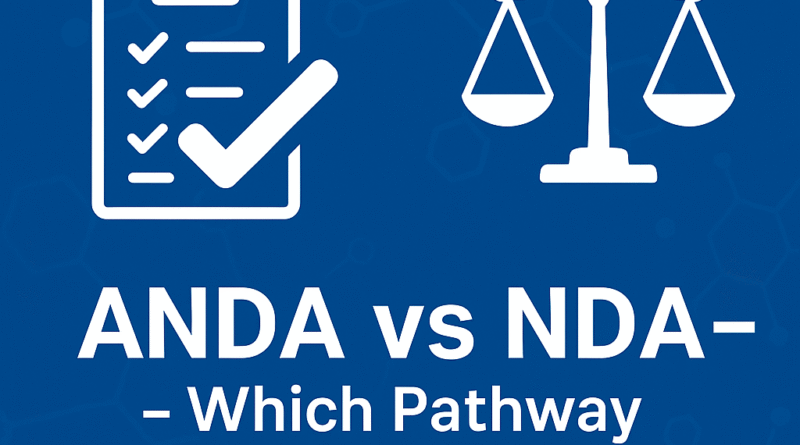ANDA vs NDA – Key Differences, Costs, Timelines & Regulatory Strategy
ANDA vs NDA: When it comes to launching a pharmaceutical product in the United States, choosing the correct regulatory submission pathway is critical.
The FDA provides two primary avenues for drug approvals — the New Drug Application (NDA) and the Abbreviated New Drug Application (ANDA).
Also Read: How to Register a Drug with USFDA – A Complete Submission Guide
Each route comes with its own set of requirements, timelines, and regulatory implications.
This detailed guide compares ANDA vs NDA, explains the key differences, and helps you determine the right submission strategy for your product.
📘 What is an NDA (New Drug Application)?
An NDA is the regulatory submission made to the U.S. Food and Drug Administration (USFDA) when seeking approval to market a new drug in the United States.
This pathway is used when the drug:
- Contains a new active ingredient (NCE)
- Represents a new indication, dosage, or formulation
- Is a new combination of previously approved drugs
- Includes new delivery methods or labeling claims
📦 NDA Contents:
| Section | Description |
|---|---|
| Administrative | FDA forms, cover letters |
| Quality Data | Chemistry, manufacturing, and control (CMC) |
| Non-Clinical | Animal pharmacology and toxicology |
| Clinical | Human safety and efficacy data |
| Labeling | Proposed package insert, carton |
✅ NDAs are submitted in eCTD format and require full review of safety and efficacy.
📗 What is an ANDA (Abbreviated New Drug Application)?
An ANDA is a streamlined application submitted to the USFDA for approval of a generic version of a previously approved branded (reference) drug.
It does not require new clinical data, as it relies on:
- Pharmaceutical equivalence
- Bioequivalence (BE)
- Same route of administration, strength, dosage form, and labeling
🔍 Key Characteristics of ANDA:
- Must demonstrate bioequivalence to RLD (Reference Listed Drug)
- No animal or human efficacy trials required
- Abbreviated data requirement
- Costs significantly less than an NDA
📊 Key Differences Between ANDA vs NDA
| Feature | NDA | ANDA |
|---|---|---|
| Purpose | New drugs | Generics |
| Data Required | Full clinical and preclinical data | Only bioequivalence (BE) data |
| Cost | High (millions USD) | Low to moderate |
| Timeline | 10–12 months (Standard) | 8–10 months |
| Patent Certification | Not applicable at filing | Para IV/III/II/Certification needed |
| Exclusivity | 5 years (NCE), 3 years (others) | 180-day exclusivity (Para IV) |
🔬 Clinical Trial Requirements
NDA:
- Requires full Phase I to III clinical trials
- Must submit data showing safety and efficacy in humans
ANDA:
- Requires bioequivalence (BE) study only
- Clinical trials are not needed if BE is demonstrated
💰 Cost Considerations
| Item | NDA | ANDA |
|---|---|---|
| Development Cost | $50M–$2B | $1M–$5M |
| USFDA Application Fee (2025) | ~$4,000,000 | ~$250,000 |
| User Fees (GDUFA III) | Additional per site | ANDA-specific facility fees |
ANDA vs NDA cost difference is one of the key reasons why generic manufacturers prefer the abbreviated route.
🕒 Approval Timelines
- NDA (Standard Review): 10–12 months
- NDA (Priority Review): 6 months
- ANDA: ~10 months (can be longer under GDUFA backlog)
🧩 ANDA Filing Requirements
- Reference Listed Drug (RLD) selection
- Comparative dissolution profile
- In vitro and in vivo bioequivalence studies
- Stability data for 6 months (accelerated) and 3 months (long-term)
- DMFs (Drug Master Files) for APIs
📜 NDA Filing Requirements
- IND (Investigational New Drug) approval before trials
- Complete CMC documentation
- Pre-clinical animal study reports
- Full clinical trial data
- Proposed REMS (if applicable)
🔍 ANDA Paragraph Certifications
Under Hatch-Waxman Act, ANDA filers must certify one of the following:
- Para I: No patent listed
- Para II: Patent expired
- Para III: Will wait for patent expiry
- Para IV: Patent is invalid or will not be infringed (can lead to 180-day exclusivity)
🧠 When Should You File an NDA?
✅ Use the NDA route if:
- The drug is new to the U.S. market
- You have innovative delivery or formulation
- Your product needs new safety/efficacy evaluation
💡 When Should You File an ANDA?
✅ Use the ANDA route if:
- Your drug is a generic of an already approved NDA
- You can prove bioequivalence
- Your product uses the same API, route, strength, and dosage form
🔁 What is a 505(b)(2) NDA?
It’s a hybrid application that relies partly on published literature or previously approved products.
Used when:
- You’re changing dosage form
- Adding new route of administration
- Reformulating or combining known drugs
It blends NDA and ANDA characteristics.
❓ FAQs – ANDA vs NDA

Q1. Can a company file both NDA and ANDA?
Yes, depending on the drug type. Companies often have both innovative and generic divisions.
Q2. Is ANDA only for oral solids?
No. ANDA can be used for injectables, creams, inhalers—if BE can be demonstrated.
Q3. Can ANDA be converted into NDA later?
No. They are structurally different filings. However, a 505(b)(2) can be considered as a bridge.
Q4. Is exclusivity possible for ANDA?
Yes. Para IV ANDA filers get 180-day exclusivity if they are the first to challenge a patent.
✅ Conclusion – ANDA vs NDA
Choosing between ANDA vs NDA depends entirely on the nature of your product, regulatory history, and strategic goals. NDAs offer innovation and exclusivity but come with high costs and complex data needs.
ANDAs provide a faster, cost-effective route but are limited to generics that closely match the reference drug.
Careful evaluation of your formulation, IP strategy, and clinical data is essential to choose the right FDA pathway and avoid regulatory delays.

